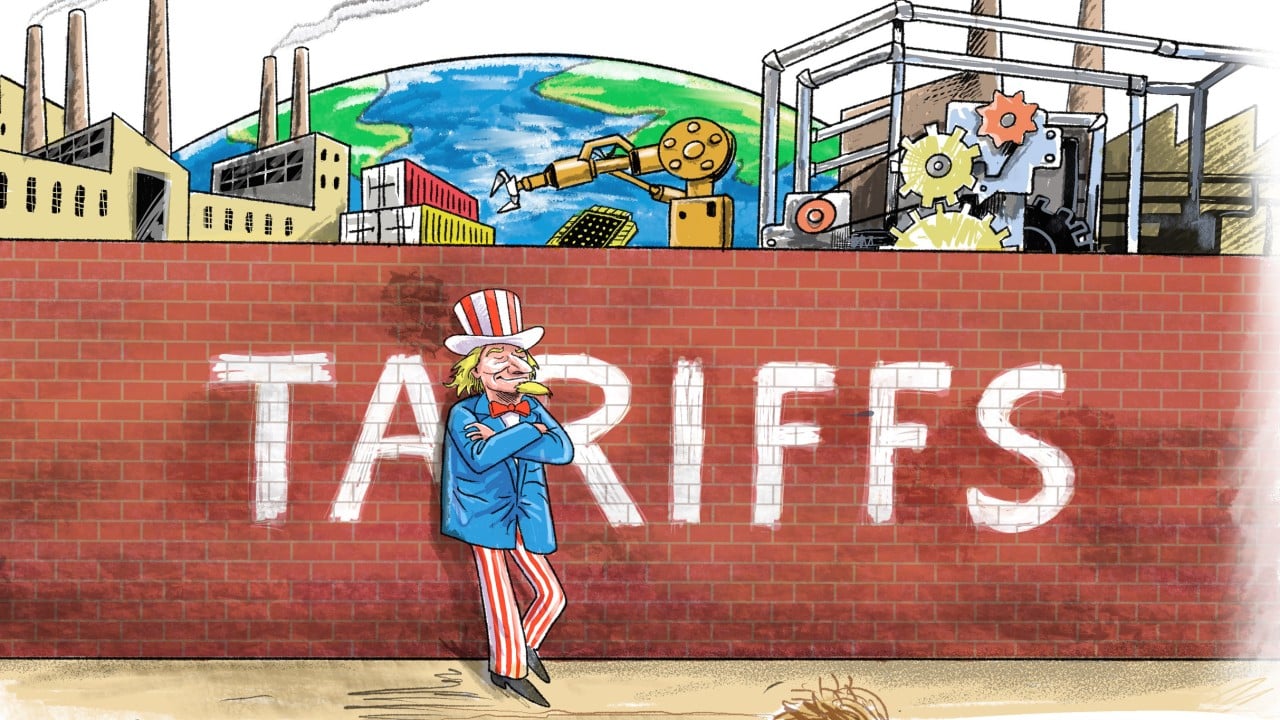As the United States heads to a presidential election in November, much of the world is waiting to see how Washington will tackle key economic and strategic engagement with other countries.
In recent years, under two different presidents, the US has approached the question of trade and globalisation through one key assumption: that America’s middle class lost its manufacturing jobs to countries like China and that those jobs must now be brought back, partly through a series of tariffs.
Geopolitical competition with China has made this issue even more urgent. The US believes it has to take back control of key supply chains from Beijing, and it wants to do that by undoing the offshoring of manufacturing jobs that has taken place over the past few decades.
In his remarks on the US economy last year, American National Security Adviser Jake Sullivan voiced this sentiment by delivering a rebuke of offshoring, saying: “In the name of oversimplified market efficiency, entire supply chains of strategic goods – along with the industries and jobs that made them – moved overseas.”
Since then, US President Joe Biden has continued to roll out tariffs on Chinese goods while retaining many of those he inherited from his predecessor, Donald Trump. He has also provided state support and subsidies to boost manufacturing in the US. The result has been a wave of deglobalisation, accentuated by a string of sanctions regimes led by Washington.
But if the aim of decoupling from China is to bring back manufacturing jobs to the US and create economic opportunities for the rural American middle class, there are already signs of failure.
Take, for instance, the case of the factory set up in Arizona by the Taiwan Semiconductor Manufacturing Company (TSMC) – one of the world’s biggest makers of advanced computer chips. TSMC first announced plans to set up a manufacturing facility in the US in May 2020, and has committed a massive US$65 billion to the project.

The Biden administration supported this effort by granting the project US$6.6 billion. For both parties, key motivations behind the venture were diversifying supply chains and insulating chip production from tensions in the Taiwan Strait.
Yet, four years later, the factory is yet to begin sales. Cultural differences and harsh working conditions have created tensions between American workers and the firm’s Taiwanese leadership, thereby significantly delaying production.
Rigorous working hours and harsh conditions make manufacturing jobs relatively less attractive to American workers. According to the US Chamber of Commerce, over 620,000 manufacturing job vacancies remained unfilled as of January.
A recent study by Deloitte found that 65 per cent of US manufacturers consider the attraction and retention of talent their biggest business challenge. Under the circumstances, the study estimates that about half of the jobs created by the manufacturing sector over the coming decade could be left vacant.

By contrast, given the level of development in the US economy, the fastest-growing occupations in the years ahead are likely to be higher-skilled ones such as statisticians, data scientists and engineers, according to Deloitte.
All this leaves rural middle-class workers in the US vulnerable. But trade wars and protectionism could in fact make things worse. Given heavy consumer demand for goods manufactured in China, Washington’s trade wars could potentially add to inflation in the years ahead.
Additionally, given that US industrial growth is increasingly in high-value, high-skilled sectors, trade protectionism could also raise the cost of raw materials and other supplies, thereby making US industry less competitive overall. To drive domestic competitiveness, what the US needs is not more isolation, tariffs and sanctions, but more globalisation and economic engagement.
US competitiveness will not only benefit from trade in goods but also the influx of people from around the world. If there is one element guaranteed to keep the US ahead in global power politics, it is immigration.

According to United Nations data, while the population of workers aged between 25 and 64 is likely to decline in the coming decades across China, Russia and western Europe, it is likely to remain relatively stable in the US.
America’s demographic advantage, relative to its population, is likely to last even beyond India’s, whose working-age population is expected to decline after 2050. Much of this demographic advantage is likely to be driven by immigration. In that sense, anti-immigrant rhetoric in Washington is a recipe for failure in the long run.
American policymakers might still be tempted to strategically deploy tariffs against China and others to regain control over critical supply chains. But in a world that is heavily interconnected, with supply chains spanning multiple geographies, it is hard to be competitive by strategically picking and choosing which products and industries to freely trade in and which to protect.
Worse, a policy of decoupling and disengaging for the strategic control of supply chains could unravel the very rules-based international order that Washington frequently cites as a core value. If world powers impose tariffs and sanctions as a means to control supply chains, global business transactions – and the supply chains themselves – become less stable and secure.
The US would be far better served by fostering multilateral trade agreements, allowing for the immigration of high-skilled workers and investing in the re-skilling of rural middle-class workers for the higher-value jobs that are likely to be the future of the US economy.
Mohamed Zeeshan is a foreign affairs columnist based in Washington, DC, and the author of “Flying Blind: India’s Quest for Global Leadership”


